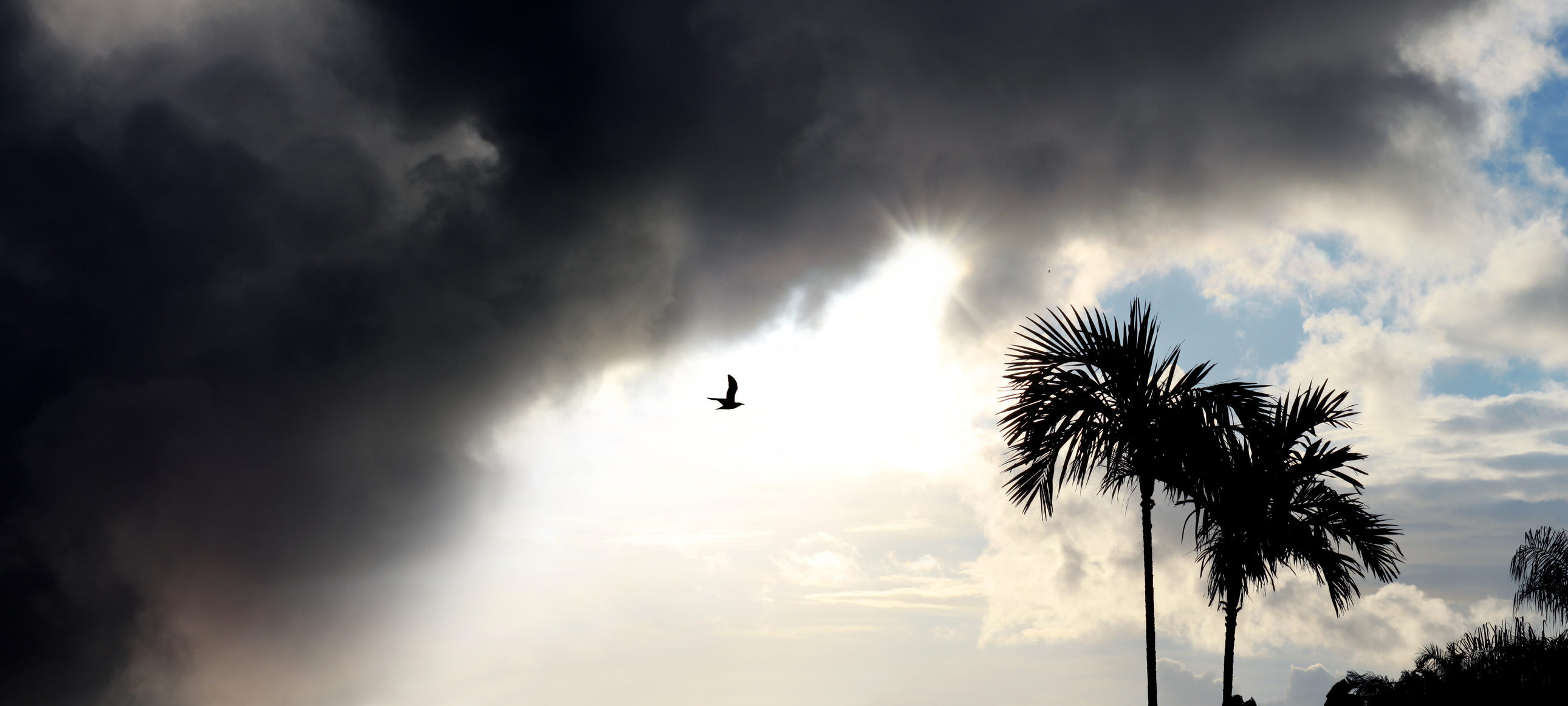
This past summer my husband and I met Bonnie as she was walking back to the high-rise beachside condominiums with her mini-golden doodle dog, Pupido. Carrying groceries, we said hello, then stopped to greet the very wiggly dog begging for attention.
“He is very friendly,” said Bonnie, who then introduced herself as a bakery business owner down from the Puerto Rican mountainside to sell her small cakes along the beach. She asked if we wanted to purchase any. We said yes. Sizing us up quickly, she invited us to her condo to pick up the freshly baked cakes. We got the dessert and then listened for at least an hour as she told her story about Hurricane Maria.
“It rained for 10 hours. The wind hammered us for 10 hours,” she began. “We had very little warning, and as Maria approached, the people in the mountains were told to go down, and the people on the beach were told to head inland. No place was safe.”
Bonnie talked about the devastation left by the storm. People started to slowly emerge from their hiding places, and found there was no water, no electricity, no phones, no elevators. And those conditions stayed that way for months. People in her 22-floor building devised a bucket system to bring water from a nearby pool. Everyone worked together, and residents managed to deliver, via a pulley system, a bucket a day.
“There were no leaves on any of the trees, on any of the plants,” she shared. “And every window, every window, was broken. Imagine when you walk through fresh snow and it crunches under your feet. That was how it was here, everywhere on the ground, except it was broken glass crunching under your feet.”
With a sigh, her eyes bright and her fingers touching the cross on her necklace, Bonnie quietly yet firmly declared: “It’s been a week that I’ve been off the medicine that has helped me sleep at night for the past five years. It was time.”
Measuring time through traumatic experiences seems woven into our humanity. I remember September 11, 2001. Vividly. I mark time before 9/11 and after—as some still do. My grandparents marked time by December 7, 1941. The people who lived through the 2018 Camp fire in Paradise, California, and surrounding area, mark time as before and after the fire—as will those affected by the 2023 Maui fires in Hawaii. So many of us are marking time as before the COVID-19 pandemic and after.
While it’s natural to mark time by the tragedies and traumas that have marred our lives, including those of a more personal nature, we also mark time through triumphs. Wedding days, births, new homes, graduations, new jobs . . . these are some of the points—benchmarks—that give us measures of hope, joy. The sad reality for many of us is that those happy moments aren’t often equal benchmarks in this sinful world. The traumatic seems to win out.
But I think of Jesus and how He has created the best markers to live by. The place where the horrors that serve as our benchmarks can be neutralized by these events: the birth of Jesus, the death of Jesus, and the resurrection of Jesus. If we keep these markers in our minds, they can help us prepare for when there “will be no more death or mourning or crying or pain, for the old order of things has passed away” (Rev. 21:4).
The crucial historical time measures of Christ’s life and sacrifice will remove the sting of sin and death. “He gives us the victory through our Lord Jesus Christ” (1 Cor. 15:57).
I want to be like Bonnie, and know that it’s time to measure life by God’s marks.
— Kimberly Luste Maran is editor of Adventist Journey and communication director for the North American Division
